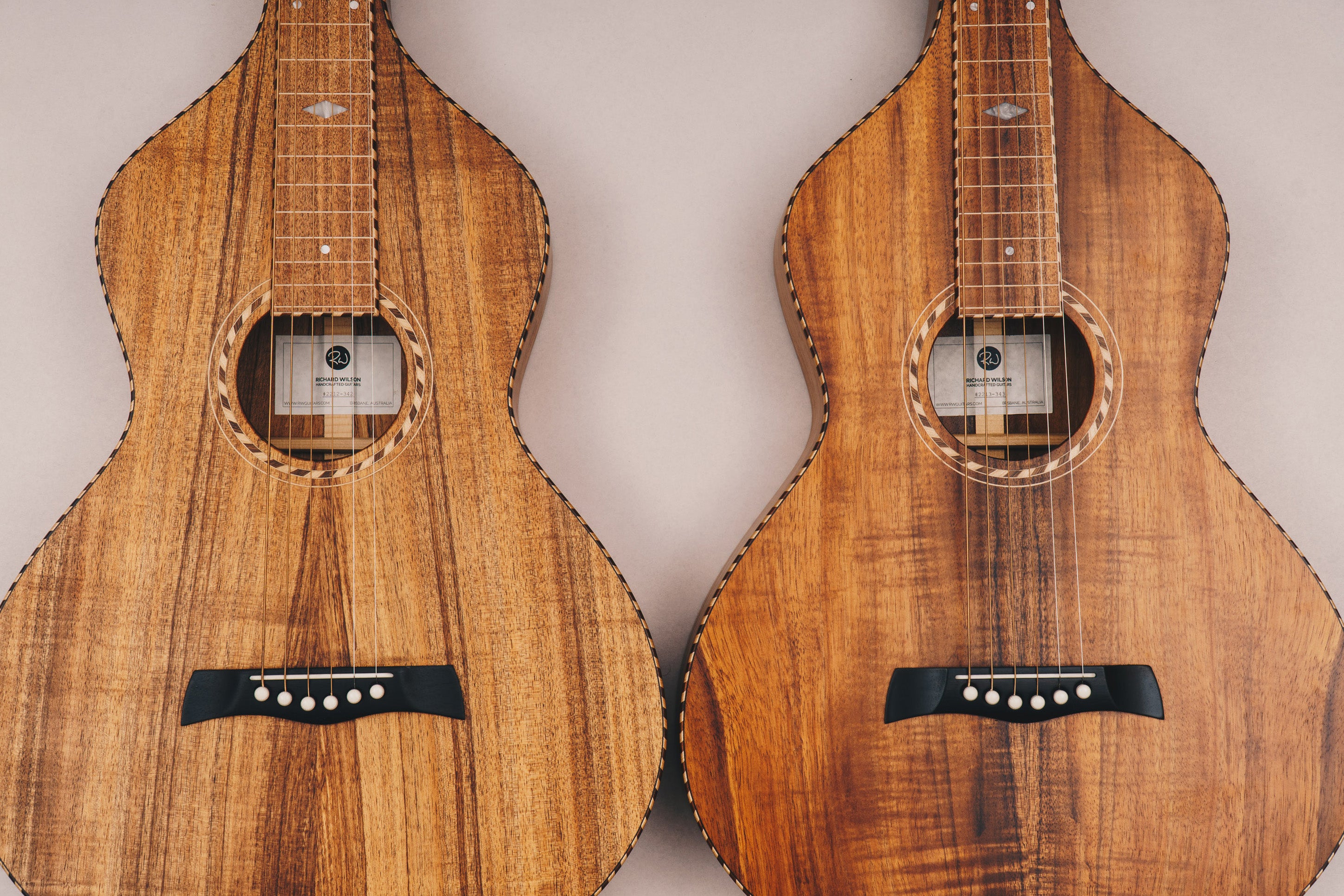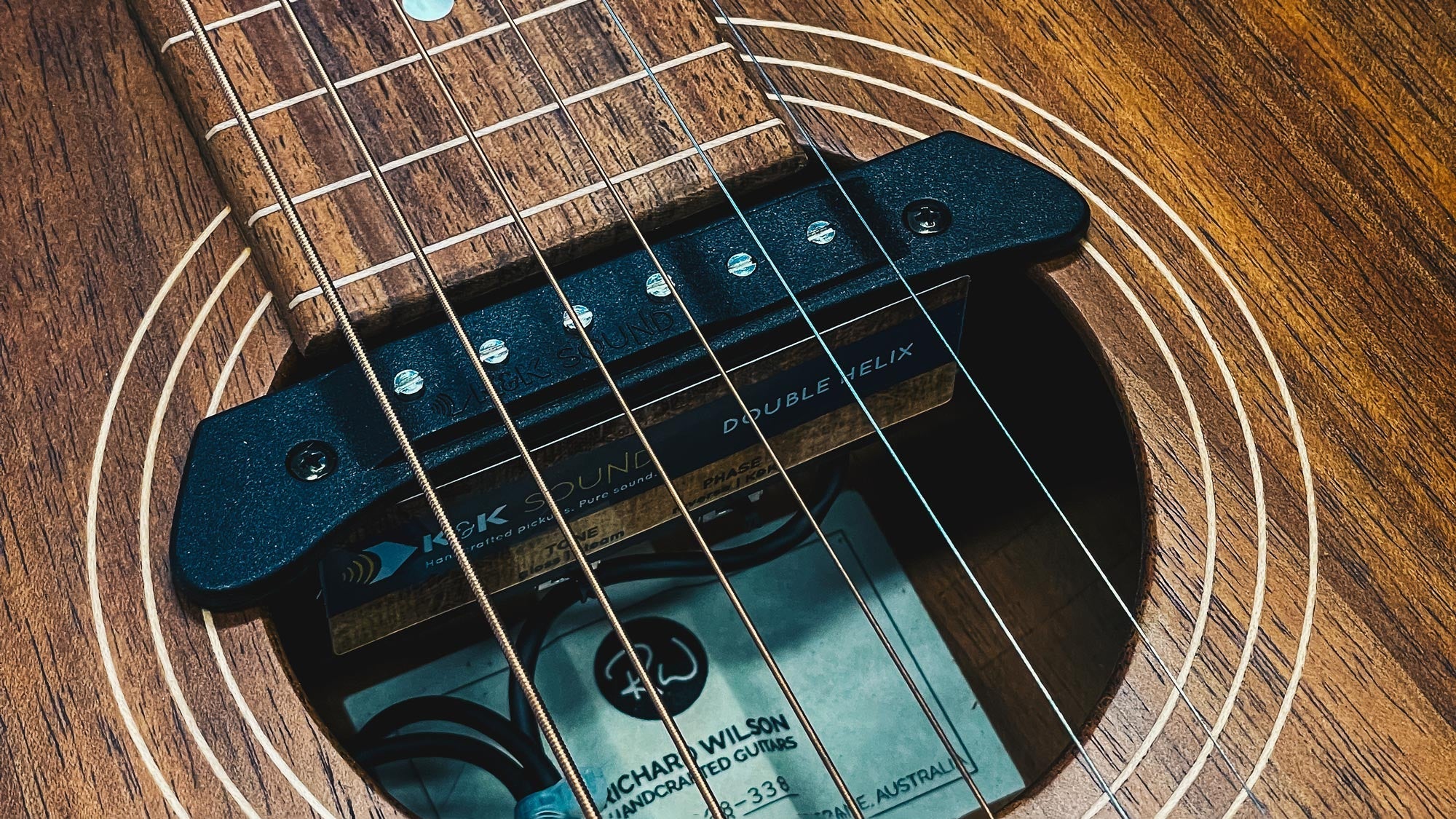C6 Tuning for Weissenborn Guitars: How to Tune, String, and Master the Classic Hawaiian Sound

C6 tuning is one of those classic lap steel tunings that never really goes out of style. It’s at the heart of Hawaiian steel, shows up in Western swing, and gives slide players access to rich harmonies you can’t quite get from the more common open tunings. If you play a Weissenborn or acoustic lap steel, it’s absolutely worth exploring.
This guide will walk you through what C6 tuning is, some of the history behind it, and two practical ways to tune your Weissenborn to C6 using the string sets I normally supply.
What is C6 Tuning?
At its simplest, C6 tuning is a C major chord with an added 6th. The most common six-string version looks like this:
C – E – G – A – C – EThat “A” note is what gives it the warmth. Instead of a plain major chord, you get a slightly more complex, more “Hawaiian” sound. It’s beautifully voiced for melodic slide playing because so many useful intervals are right under the bar.
Famous Songs and Players Who Use C6
C6 has deep roots in lap steel history. Early Hawaiian steel players like Sol Hoʻopiʻi used C6 and related tunings to get those lyrical, vocal-like melodies. Later on, players such as Jerry Byrd helped cement C6 as the go-to tuning for professional non-pedal steel in country and Western swing.
You’ll also hear C6 flavours in recordings from bands associated with the Western swing era (think Bob Wills & his Texas Playboys) and in country sessions where a sweeter, more harmonically interesting steel part was needed.
The takeaway: if you like Hawaiian, Western swing, or any kind of expressive lap-style playing, C6 is a very natural tuning to spend time in.
Choosing the Right Version of C6 for Your Weissenborn
Here’s the part that matters for Weissenborn players: not every C6 layout will sit comfortably on an acoustic instrument with a light top, especially if you’re using a set that was originally supplied for open D or open E.
The strings I supply are ideal for Open D or Open E, but with a couple of tweaks you can absolutely get into C6 territory.
Option 1: Lower-Tension C6 (C–A–C–G–C–E)
If you want to try C6 without changing strings too much, start here.
Tune your Weissenborn to:
C – A – C – G – C – EThis version works because it keeps the tension a bit lower, which suits an acoustic hollow-neck. Using the standard WB56-style set, you may notice the 6th and 4th strings feel a little loose — that’s expected when you tune them down like this.
Important: be cautious about tuning the 2nd string up to a high C if your gauge is on the heavier side. On some sets, that can start to feel a bit tight.
Option 2: Traditional C6 (C–E–G–A–C–E)
If you want the “real” lap steel C6 layout, use this version:
C – E – G – A – C – ETo make this work on a Weissenborn with the WB56 strings I normally supply, do this:
- Start with a fresh set of WB56 ( see WB56 strings).
- Leave off the 6th string from that set.
- Shift the remaining strings down one position.
- Add a lighter 1st string, around .012.
You’ll end up with something like this (low to high):
.042w, .032w, .024w, .018, .014, .012You may prefer to swap that .018 for a wound string to keep the feel consistent as you move across the neck. That’s just a playability preference, but a lot of players like the even tension.
This approach keeps the instrument in a safe tension range while still giving you the classic C6 intervals that make the tuning so musical.
Getting the Best Tone and Feel
Once you’re in C6, it will feel slightly different to your usual open D/E setup. The intervals are closer together in places, which is part of why C6 is so expressive.
Try these to get started:
- Straight bar across all six strings for your C6 “home” chord.
- 5th fret for F6, 7th fret for G6 — nice for Hawaiian-style movement.
- Play mostly on strings 3–4–5 for sweet, vocal melodies.
Because C6 has that built-in 6th, you can get jazzy or Hawaiian flavours without slants or big bar moves, which is why so many lap steel players love it.
Final Thoughts
C6 is one of the fastest ways to make your Weissenborn sound more “lap steel” and less “regular guitar tuned to an open chord.” It connects you to the roots of the instrument, and it opens up voicings that just aren’t there in standard open tunings.
The strings I recommend for Weissenborn guitars are our WB56 sets. These are what I string every Weissenborn I make with, and what I recommend for use on vintage Weissenborns.
To summarise:
- Want the easiest way? Try C–A–C–G–C–E with your current set.
- Want the classic lap steel layout? Reconfigure the WB56 set, leave off the 6th, add a .012 on top, and tune to C–E–G–A–C–E.
- Watch your tension: don’t force a heavy-gauge string up to high C if it doesn’t want to go.
As always, listen to the guitar. Hollow-neck Weissenborns are responsive instruments — if it starts to feel overly tight or choked, back it off a semitone or adjust the gauges.


